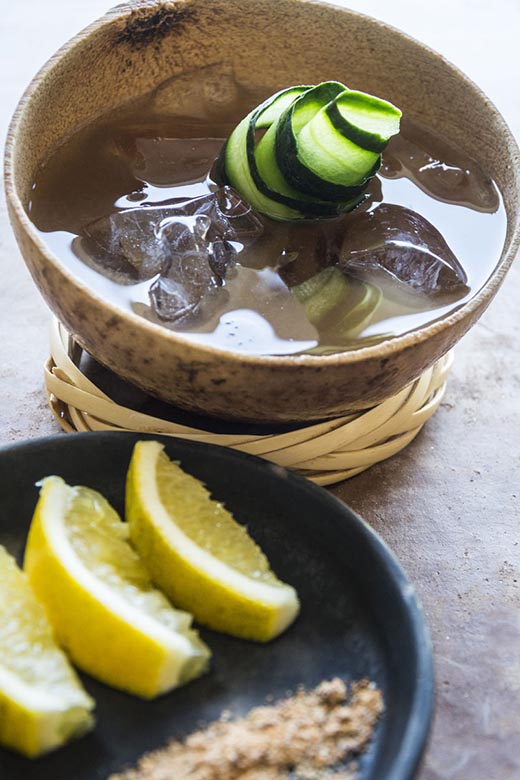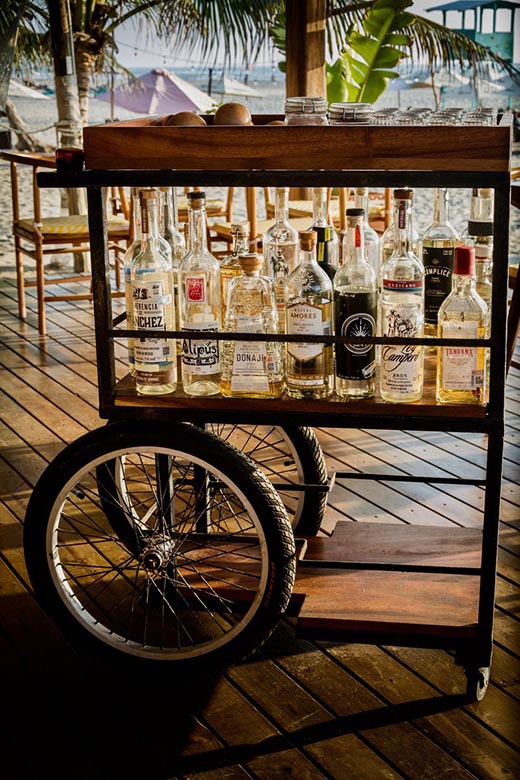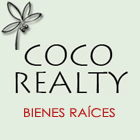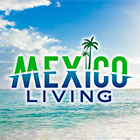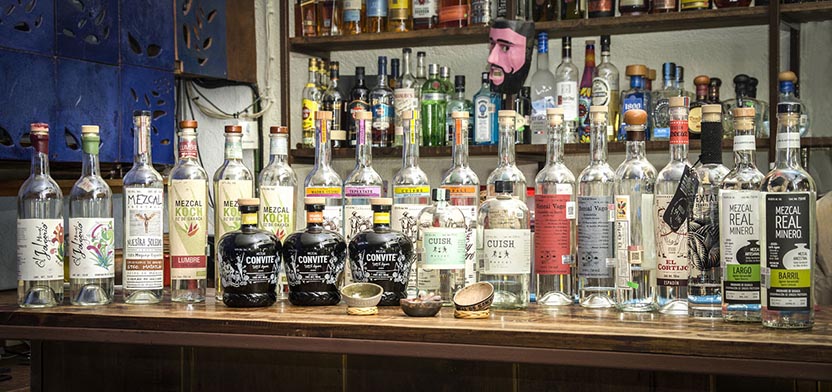
Drinking Mezcal in Puerto
Coming clean. My introduction to mezcal was not with mezcal at all, but rather with that substance which is maybe one-part mezcal to two parts cane sugar hooch that were served in clubs that no longer exist on Zicatela. I’ve also had my share of coffee mezcal which isn’t made with mezcal either.
My all-time worst experience was being served an ammonia cleaning solution when I asked for a mezcal at a pricey, beach restaurant (which no longer exists). That lead to a quick retreat to the Casa de Salud. The restaurant bought its mezcal in 5-liter jugs which it would then pour into bottles. They also bought their detergent in 5-liter jugs. On that day, the cleaning woman had moved the jugs, and the bartender had mistakenly poured the detergent into a mezcal bottle. Fortunately, I had only taken a small sip and no harm was done. For years after that, I only drank premium tequilas when I went out.
Puerto has improved in many ways over the years, and now we have many restaurants that serve the real stuff.
Once you have tried a premium mezcal – one that is smooth and has an interesting, complex bouquet that lingers on your palate for five or ten minutes – then your problems really begin. They are really expensive, typically close to 200 pesos a shot and 700 pesos or more a bottle.
Before tasting a mezcal, you should sniff it to enjoy its aroma. Then you should take small sips, allowing the liquor to linger in your mouth to awaken your palate.
All mezcal comes from the agave cactus. There are many varieties of this plant. (Tequila comes from the blue agave.) The most popular is the espadín because it can be planted in rows and only takes eight years to mature. But the taste of the espadín varies greatly according to differences in the soil and how it is distilled. This explains the wide range in prices among this kind of mezcal.
You will notice that the espadín comes in three categories. Joven is as clear as water and has aged for 6 months. Reposado has a yellowish hue and has aged from 6 months to one year. Añejo (aged) mezcal has been in an oak vat for one to 12 years.
Whisky drinkers tend to prefer añejos, says Elias Carbajal Ruíz, of the Agua Salá restaurant on Zicatela, while connoisseurs prefer the joven because it best exhibits the flavors of the plant.
Alcohol content also affects the taste. Normally, mezcal is distilled twice and has an alcohol content of 40% (80 proof). However, some mezcals are distilled three times and weigh in at 55% (110 proof) or more. The higher the alcohol level, the better the taste. This is a tricky trade-off.
Cuixe (quee-chey) is a variety of the agave that has a more herbal taste than the espadín and is not as sweet.
Then there are varieties of agave that only grow in the wild. The bestknown is the tobalá which takes 12 years to mature. These days the tobalá is also cultivated. The tepextate, mexicano, velatobe and arroqueño take 20 to 35 years to mature. While the wild varieties are trendy now, local experts agree that they are not necessarily better than espadíns. I had one velatobe that broke my heart, its bouquet was very complex and delicious. Then I had one from another producer that was good but not fantastic. So I am very careful when it comes to recommendations.
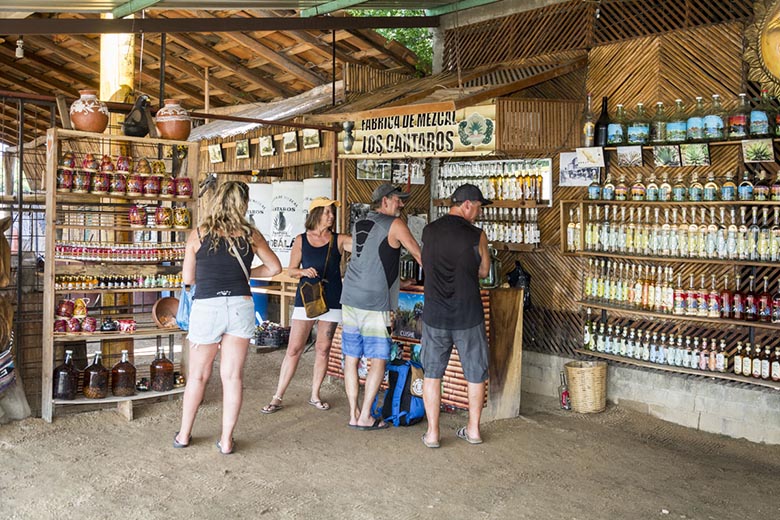
Most mezcal from Oaxaca is labeled artisanal and each bottle has a seal certifying that it is so. Artisanal means that the mezcal comes from a particular palenque and was produced in a way agreed upon by the mezcal licensing authority. Some mezcal labels tell you the village where it was grown and the method of production, others do not. This information (or the lack of it) has nothing to do with price or quality. Basically, it’s all about marketing.
Some producers get around the cost of certification by calling their mezcal “aguardiente de agave.”
Some mezcal, especially for export, is called traditional. Again,the term is meaningless because it can mean anything. Mezcal that is produced in large quantities (like what you would find in Chedraui)is called industrial by smaller producers.
Mezcal production has sky rocketed – along with the price – in recent years, largely because of the large demand in the U.S. and Europe. There are internet sites where people in the U.S. argue about varieties and labels that aren’t even available in Mexico.
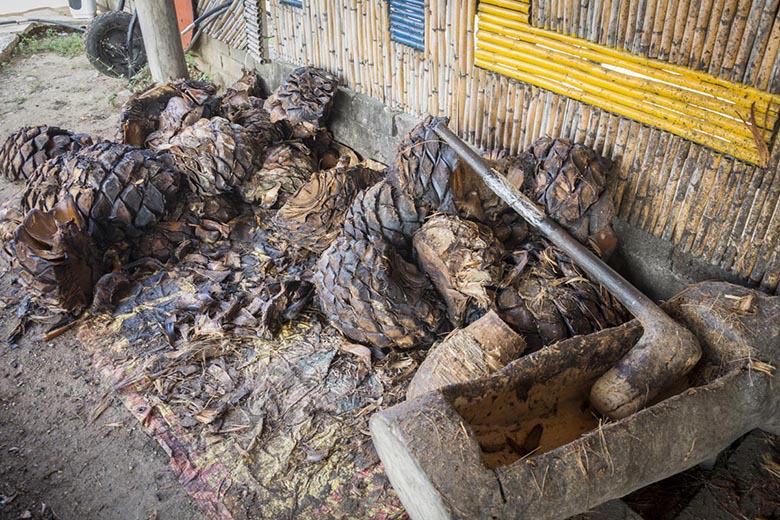
Everyone and her cousin in Puerto knows a small, artisanal palenque from whom she gets “excellent” mezcal in a 5-liter jug at much lower prices than we pay in the stores, since they are not taxed. Sometimes what you get is good, other times not so great. I suggest that you first do a mezcal tasting at Agua Salá (3 small shots of the mezcals of your choice for $180 pesos) to establish a point of reference. Bear in mind that mezcal comes in many flavors – some are fruity and others herbal. People have different preferences, just as they do with cheese and ice cream. Given my druthers, I would keep several different mezcals in my house.
A final word of caution, sniff your mezcal before you taste it. If it hurts your nose, do not drink it.
Mezcal Exports Soar
When we say mezcal production has exploded, - and we are just talking about the taxed, liter (750 ml) bottles - the numbers scream out. They rose from 1.7 million in 2013 to 5.9 million in 2018. Well over half (3.4 million) of these bottles were exported, mainly to the U.S. In fact, mezcal has become too expensive for the domestic market because of the 53% tax on each bottle.
We did some comparison shopping on the Internet, using Alipús, San Andrés, espadín for our model. In Chedraui, it costs $669 pesos ($35.00 U.S.) The same bottle in New Jersey goes for $75.00, in Seattle $90.00, but in Atlanta and most of California it sells for $50.00. In Germany, you pay 49 Euros ($54.00 U.S). Check out this site for a list of the best mezcals available in the U.S. At the bottom of the page is a list of fine mezcals that you can only find in Mexico. https://mezcalistas.com/mezcalsavailable-in-the-us/

